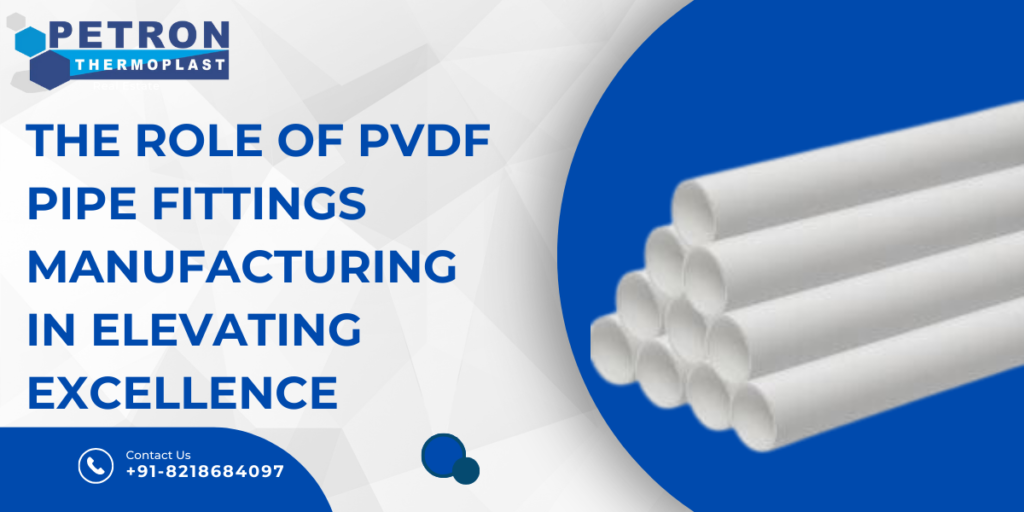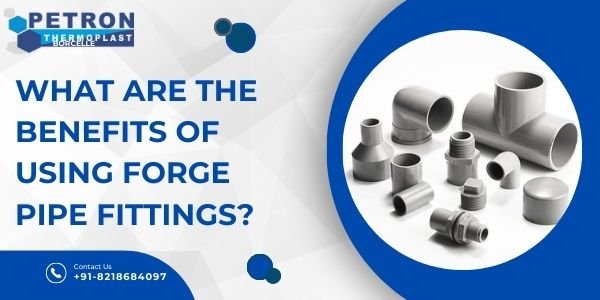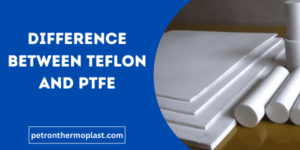In the intricate tapestry of industrial infrastructure, forge pipe fittings stand as stalwart components, weaving seamless connections in the labyrinth of pipelines. These vital elements play a pivotal role in ensuring the integrity and efficiency of fluid and gas transport systems. Among the myriad options available, the spotlight gleams brightly on PVDF pipe fittings manufacturing. Let us embark on a comprehensive journey to unravel the myriad benefits embedded in the deployment of these meticulously crafted components.
Understanding Forge Pipe Fittings
Before delving into the advantages of PVDF pipe fittings manufacturing, it’s imperative to grasp the essence of forge pipe fittings themselves. These fittings, often overlooked in the grand scheme of industrial operations, are the unsung heroes ensuring fluidity in the movement of liquids and gases.
Definition and Purpose
Forge pipe fittings are precision-engineered components designed to connect, redirect, and control the flow of fluids within a piping system. Employed across diverse industries, these fittings contribute to the structural integrity and efficiency of pipelines. The forging process, characterized by the application of heat and pressure to shape metal, imparts robustness to these fittings, rendering them durable and resistant to wear and tear.
The Unrivaled Merits of Forge Pipe Fittings
1. Durability and Longevity
At the heart of forge pipe fittings lies a commitment to durability that surpasses conventional alternatives. The forging process involves subjecting metals to extreme conditions, aligning their molecular structure for optimal strength. This imparts a remarkable level of resilience to forge pipe fittings, enabling them to withstand the rigors of continuous operation without succumbing to wear.
2. Precision Engineering for Seamless Integration
One of the standout features of forge pipe fittings, particularly in the realm of PVDF pipe fittings manufacturing, is the precision in engineering. The meticulous crafting of these components ensures seamless integration into a pipeline system, eliminating the risk of leaks or inefficiencies. This precision is paramount in industries where the slightest deviation can have cascading consequences.
3. Enhanced Corrosion Resistance
Corrosion poses a perennial threat to the integrity of pipelines, especially when conveying corrosive substances. Forge pipe fittings, crafted through processes such as PVDF pipe fittings manufacturing, emerge as stalwart guardians against corrosion. The inherent resistance of PVDF (Polyvinylidene Fluoride) to chemical degradation elevates these fittings to a league of their own, ensuring longevity even in the face of corrosive challenges.
4. Optimized Flow Characteristics
Fluid dynamics, a complex dance within pipelines, demands components that harmonize with the laws of physics. Forge pipe fittings, with their precisely engineered shapes and dimensions, optimize the flow characteristics of fluids. This results in reduced turbulence and pressure drops, contributing to enhanced efficiency in the transportation of liquids and gases.
5. Temperature Tolerance Beyond Ordinary
Industries grappling with extreme temperatures find solace in the exceptional temperature tolerance offered by forge pipe fittings. The forging process imbues these fittings with thermal stability, enabling them to function seamlessly in environments where temperatures fluctuate dramatically. In the realm of PVDF pipe fittings manufacturing, this attribute is accentuated, making these fittings indispensable in industries ranging from chemical processing to aerospace.
6. Cost-Efficiency Through Lifecycle
While the initial investment in forge pipe fittings may seem substantial, the cost-efficiency over their lifecycle is a compelling argument in their favor. The durability, resistance to corrosion, and minimal maintenance requirements translate to long-term savings for industries. This makes forge pipe fittings, especially those born from PVDF pipe fittings manufacturing, a prudent investment in sustainable operational infrastructure.
7. Adaptability to Varied Environments
Forge pipe fittings, and notably those crafted through PVDF pipe fittings manufacturing, exhibit a remarkable ability to adapt to diverse environmental conditions. Whether in aggressive chemical environments, high-pressure systems, or extreme temperatures, these fittings continue to deliver optimal performance. This adaptability ensures a wide spectrum of applications, from chemical plants to oil refineries.
8. Compliance with Stringent Standards
Industries navigating a landscape of regulations and standards find an ally in forge pipe fittings. The manufacturing processes, especially in the case of PVDF pipe fittings, adhere to stringent quality and safety standards. This not only ensures the reliability of the fittings but also facilitates compliance with regulatory frameworks, mitigating risks associated with non-compliance.

The Role of PVDF Pipe Fittings Manufacturing in Elevating Excellence
Unveiling the Power of PVDF
Polyvinylidene Fluoride (PVDF), a high-performance thermoplastic, takes center stage in the manufacturing of pipe fittings. This material brings a unique set of properties that significantly enhance the overall performance and longevity of forge pipe fittings.
Chemical Resistance:
PVDF’s inherent resistance to a broad spectrum of chemicals positions it as a front-runner in industries dealing with corrosive substances. This quality, when harnessed through PVDF pipe fittings manufacturing, ensures that the fittings maintain their structural integrity even when exposed to aggressive chemical agents.
High Purity and Low Extractables:
Industries with stringent purity requirements, such as pharmaceuticals and semiconductor manufacturing, find an ideal companion in PVDF. The material exhibits low extractables, minimizing the risk of contamination. This purity, coupled with the precision of forge pipe fittings, makes them invaluable in applications demanding the utmost in cleanliness.
Thermal Stability:
PVDF’s resistance to thermal degradation extends the operational envelope of forge pipe fittings. In processes where temperature fluctuations are the norm, these fittings remain steadfast, contributing to the overall reliability of the pipeline system.
The Intersection of Precision and Innovation
PVDF pipe fittings manufacturing transcends the conventional, standing at the intersection of precision engineering and innovative materials. The process involves molding PVDF into intricate shapes, ensuring that the resulting fittings align seamlessly with the demands of modern industries.
Conclusion: Elevating Industry Standards through Forge Pipe Fittings
In the grand tapestry of industrial progress, forge pipe fittings emerge as unsung heroes, weaving connections that form the backbone of fluid and gas transportation. The advantages encapsulated in PVDF pipe fittings manufacturing elevate these components to a realm of excellence, where durability, precision, and adaptability converge.
As industries evolve and demand more from their infrastructure, the role of forge pipe fittings becomes increasingly pivotal. The marriage of precision engineering and innovative materials, epitomized in PVDF pipe fittings manufacturing, propels these fittings to the forefront of industrial reliability. The journey through the benefits outlined here serves as a testament to the indispensability of forge pipe fittings in shaping a resilient and efficient industrial landscape.

FAQs About Forge Pipe Fittings and PVDF Pipe Fittings Manufacturing
Q1: What are forge pipe fittings, and how do they differ from other types of fittings?
A1: Forge pipe fittings are precision-engineered components used in piping systems to connect, redirect, and control the flow of fluids. The forging process, involving heat and pressure, imparts durability and strength to these fittings, distinguishing them from other alternatives like cast fittings. Forge pipe fittings are known for their robustness and resistance to wear and tear.
Q2: What is PVDF, and why is it significant in pipe fittings manufacturing?
A2: PVDF stands for Polyvinylidene Fluoride, a high-performance thermoplastic known for its exceptional chemical resistance, thermal stability, and low extractables. In pipe fittings manufacturing, especially in the case of PVDF pipe fittings, this material enhances the overall performance and longevity of the fittings, making them ideal for industries dealing with corrosive substances and requiring high purity.
Q3: What industries benefit the most from the use of forge pipe fittings?
A3: Forge pipe fittings find applications across diverse industries, including but not limited to chemical processing, oil and gas, pharmaceuticals, aerospace, and semiconductor manufacturing. Their adaptability to varied environments, durability, and compliance with stringent standards make them indispensable in ensuring fluidity in industrial operations.
Q4: How does the precision engineering of forge pipe fittings contribute to their performance?
A4: The precision engineering of forge pipe fittings ensures seamless integration into a pipeline system. The meticulous crafting of these components eliminates the risk of leaks or inefficiencies, optimizing the flow characteristics of fluids. This precision is crucial, especially in industries where even slight deviations can have significant consequences.
Q5: What sets PVDF pipe fittings apart in terms of chemical resistance?
A5: PVDF’s inherent resistance to a broad spectrum of chemicals positions it as a superior choice for applications where corrosive substances are prevalent. When utilized in PVDF pipe fittings manufacturing, this chemical resistance ensures that the fittings maintain their structural integrity even when exposed to aggressive chemical agents.
You May Also Like : PVC 3-Way Ball Valve Installation Guide From Petron Ther
Why Are Ball Valve Made Of Stainless Steel




